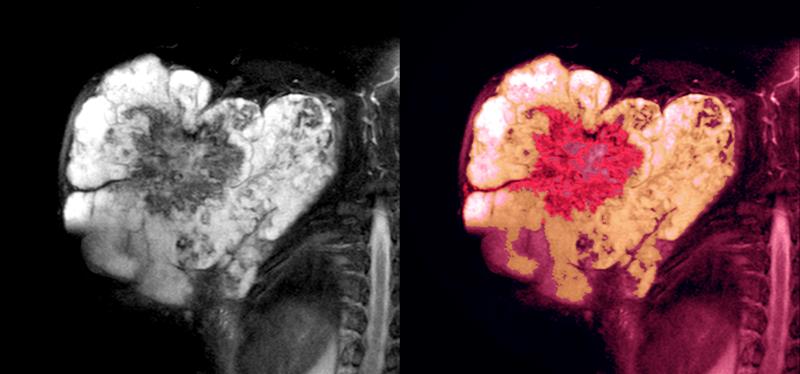Phase III data fail to confirm OS benefit of olaratumab in soft tissue sarcomas





Phase III findings of the ANNOUNCE trial disputed the initial overall survival (OS) benefit seen in phase II: olaratumab added to doxorubicin did not improve OS in individuals with locally advanced/metastatic soft tissue sarcomas* (STS).
“[The current] findings considerably differed from the [phase II results demonstrating] substantial improvement in OS with higher but acceptable toxicity rates in the doxorubicin-olaratumab group [vs] doxorubicin alone,” said the researchers. [Lancet 2016;388:488-497]
In phase III, OS rates were similar between olaratumab vs placebo in the total STS cohort (median, 20.4 vs 19.7 months; hazard ratio [HR], 1.05; p=0.69) and the leiomyosarcoma subgroup (median, 21.6 vs 21.9 months; HR, 0.95; p=0.76). [JAMA 2020;323:1266-1276]
Grade ≥3 adverse event (AE) rates were similar between olaratumab vs placebo, the most common being neutropenia (46 percent vs 49 percent) and leukopenia (23 percent vs 24 percent). Febrile neutropenia was the only AE classified as ‘serious’ regardless of grade.
PDGFR** expression also did not influence olaratumab response, as seen by the similar OS rates between olaratumab vs placebo (median, 17.2 vs 19.1 months [PDGFRα+], 23.6 vs 21.9 months [PDGFRα–], 18.8 vs 19.9 months [PDGFRβ+], and 28.3 vs 20.6 months [PDGFRβ–]). Though exploratory, the researchers noted that these should be accounted for, as these might be “possible features of the mechanism of action of olaratumab that could have affected outcomes.” These underline the need to evaluate STS biologies to produce effective treatments, they added.
Why the difference?
The researchers randomized 509 participants (mean age 57 years, 58 percent female, 46 percent with leiomyosarcoma) 1:1 to receive up to eight cycles of doxorubicin 75 mg/m2 either with olaratumab*** or placebo, followed by olaratumab or placebo monotherapy. Median follow-up was 31 months.
They mentioned several explanations why the promising phase II data were not replicated in phase III. “If olaratumab has some activity in STS … the disparate results [may be] due to the cumulative effect of multiple contributing factors within and between studies, [such as] differences# in design elements,” they said.
“If olaratumab has no activity in STS, the [phase II outcomes] might be attributed to … single-agent doxorubicin [recipients] who crossed over to olaratumab monotherapy after documented disease progression, possibly creating a negative bias for survival. [They] could have experienced a more prolonged period of progression, through two clinical trial events, before moving on to other possibly effective agents,” they added.
“In contrast, [phase III olaratumab recipients] with disease progression … could have moved off study to an agent with known efficacy because crossover of placebo [recipients] was not allowed,” they continued.
Heterogeneity of STS histologies may have also factored in the disparity, owing to their unique underlying biology and clinical behaviour, they added.
Unmet need
“STS remains an area of unmet medical need and a fertile ground for scientific discovery and drug development,” said the researchers. The lack of improvement in STS studies evaluating doxorubicin plus other agents## underpin the need for new treatments. [Lancet Oncol 2017;18:1397-1410; Lancet Oncol 2014;15:415-423; J Clin Oncol 2016;34:3898-3905; Lancet Oncol 2017;18:1089-1103] The negative findings in these trials also raise the question of whether future trials should be histology-specific or biomarker-driven, or cover all STS histologies, they added.
“This trial shows the importance of confirmatory phase III trials to validate results from smaller trials and exemplifies the role of accelerated/conditional approvals to provide access to promising medicines for patients with unmet medical needs until the potential of the medicine can be validated, provided there is an acceptable risk profile and plan for rapid validation,” they concluded.